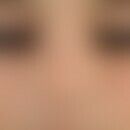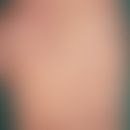Synonym(s)
DefinitionThis section has been translated automatically.
Rare, autosomal-recessive inherited form of Ehlers-Danlos syndrome, which is not counted among the main types.
EtiopathogenesisThis section has been translated automatically.
The cause of EDS with tenascin-X deficiency is homozygous or combined heterozygous mutations in the TNXB gene, which lead to a complete absence of the gene product tenascin-X at the RNA and protein level. Tenascin-X is a glycoprotein that is synthesized in the extracellular matrix of skin, tendons, muscles and blood vessels. The absence of tenascin-X in serum further causes a decreased expression of type VI collagen. Tenaxscin can be detected in serum. So far, 6 different mutations in the TNXB gene have been described. Some patients with tenascin-X deficiency show myopathic symptoms as seen in Bethlem myopathy or Ullrich muscular dystrophy.
You might also be interested in
ClinicThis section has been translated automatically.
Characteristic are classic symptoms of the Ehlers-Danlos syndrome with overstretchable skin, hyper mobile joints and tissue damage. In contrast to patients with classic EDS, however, neither atrophic scarring nor delayed wound healing occurs. Furthermore, complications such as diverticulitis, rectal prolapse, mitral valve prolapse, as well as neuromuscular involvement with muscle weakness, hypotension, myalgia, mild fatigue and paraesthesias, as well as hemorrhages and haematomas of the skin may occur.
Note(s)This section has been translated automatically.
Remarkable is a concordant occurrence of scléroderma en coup de sabre with a tenascin-X-deficient Ehlers-Danlos syndrome.
LiteratureThis section has been translated automatically.
- Burch GH et al (1997) Tenascin-X deficiency is associated with Ehlers-Danlos syndrome. Nat Genet 17:104-108.
- Gebauer K (2016) Coincidence of scleroderma en coup de sabre and Ehlers Danlos syndrome type III.
- O'Connell M et al(2010) Tenascin-X deficiency and Ehlers-Danlos syndrome: a case report and review of the literature. Br J Dermatol 163:1340-1345.
Disclaimer
Please ask your physician for a reliable diagnosis. This website is only meant as a reference.




